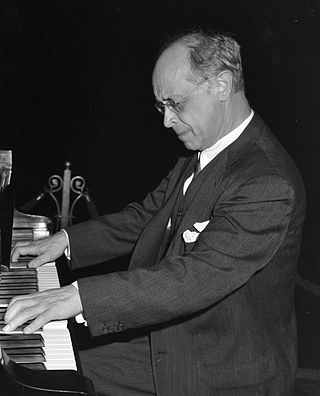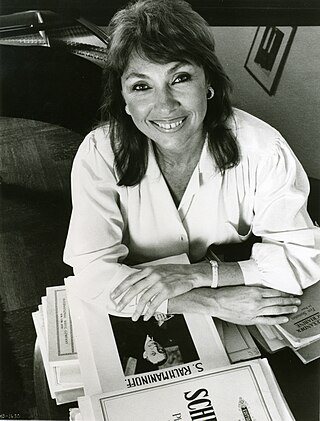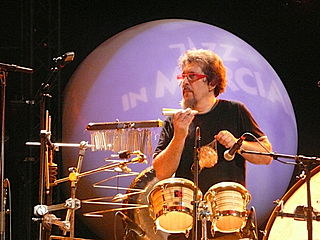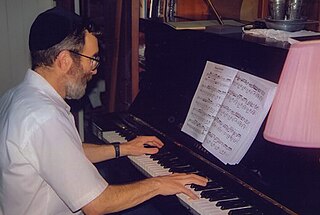Paula Robison | |
|---|---|
 Paula Robison at Tannery Pond Concerts, June 20, 2010 | |
| Background information | |
| Born | June 8, 1941 Nashville, Tennessee |
| Occupation(s) | Soloist, teacher |
| Instrument | Flute |
Paula Robison (born June 8, 1941) is a flute soloist and teacher.
Paula Robison | |
|---|---|
 Paula Robison at Tannery Pond Concerts, June 20, 2010 | |
| Background information | |
| Born | June 8, 1941 Nashville, Tennessee |
| Occupation(s) | Soloist, teacher |
| Instrument | Flute |
Paula Robison (born June 8, 1941) is a flute soloist and teacher.
Paula Robison was born in Nashville, Tennessee, the daughter of David V. and Naomi Robison, an actor. David Robison was a playwright and writer for film and television. Her paternal grandmother was a piano teacher, her maternal uncle the playwright Jerome Lawrence, and there were other musicians and dancers in the family. David studied in Vienna, and upon his return joined the faculty of Fisk University. There the family met the singer Paul Robeson, who became Paula's godfather. [1]
The family moved to Hollywood, where Naomi continued her acting career and David took up screenwriting. Paula's sister Deborah and brother Joshua were born there. Paula learned to play the flute in the orchestra of North Hollywood Junior High School, continuing her studies with Arthur Hoberman. She studied piano with her grandmother. At the age of ten she first met the composer Leon Kirchner, with whom she collaborated as an adult. [1]
During the McCarthy era the Robisons were charged and questioned by a committee in a televised hearing. With both parents on the Hollywood blacklist and out of work, the family was suddenly without financial resources. They were compelled to move to New York State to live on her grandmother's farm. After several years, the family returned to Studio City, California and David Robison started writing under a pen name and found success in television, writing for Lassie, Bewitched, and The Andy Griffith Show. When the blacklist came to an end, he resumed writing under his own name. His play, Promenade, All, with a star cast which included Hume Cronyn, Eli Wallach and Ann Jackson, played on Broadway in 1972. David and Naomi moved to Woodstock NY in the mid sixties, where David died from lung cancer in 1977. [1] [2]
Paula Robison attended the University of Southern California for two years, studying flute with Roger Stevens, Principal Flutist of the LA Philharmonic, theater with Jeff Corey, and dance with Bella Lewitzky.
She eventually played for Julius Baker, which led to an audition for the Juilliard School. She was admitted and graduated with a BS in 1963. In 1961 she also began to study during the summers with Marcel Moyse at the Marlboro Music School and Festival (making her the direct musical descendant of Paul Taffanel). Her studies with Moyse continued until 1968. [3]
Robison joined the roster of Young Concert Artists in their inaugural year, 1961. The same year, she played Volière in Saint-Saëns' Carnival of the Animals with Leonard Bernstein and the New York Philharmonic. [3]
In 1966 she became the first American to win First Prize at the Geneva International Music Competition. After this her concert tours became increasingly frequent, as she played with orchestras and gave recitals, many of them with the pianist and chamber musician Samuel Sanders.
When the Chamber Music Society of Lincoln Center was established in the autumn of 1969, Robison was one of the founding members. She played in the first concerts in the recently opened Alice Tully Hall. She had her own recital series at the hall for 5 years, called "Paula and..."
She also continued to play often at Carnegie Hall, long after her debut as Volière, in programs as diverse as J. S. Bach with Alexander Schneider in his Christmas and New Year's Eve Midnight Concerts, Mozart with the Leipzig Gewandhaus Orchestra, François Borne's Fantaisie brillante sur Carmen with Skitch Henderson and the New York Pops, the New York Premiere of Leon Kirchner's Music for Flute and Orchestra with Michael Tilson Thomas and the American Symphony Orchestra, Takemitsu's I Hear the Water Dreaming with John Nelson and the Indianapolis Symphony Orchestra, as well as a program of Choro and Bossa Nova with a group of Brazilian and American musicians. [3]
On July 23, 1971, she premièred the first of Leon Kirchner's compositions commissioned for her, Flutings for Paula, in Sanders Theater at Harvard University. On September 21, 2006 she premiered the expanded version of the score with The Chamber Music Society of Lincoln Center at Alice Tully Hall, together with percussionist Ayano Kataoka. [3]
Ms. Robison gave concerts at the Metropolitan Museum of Art every season for over 30 years, at the Grace Rainey Rogers Auditorium as well as in the Medieval Sculpture Court and in the Temple of Dendur with Chamber Orchestra.
Her touring continued, with frequent concerts at the Kennedy Center in Washington DC. She performed internationally with the Budapest Strings. She continued as a participant at the Marlboro Festival, playing with Rudolf Serkin, Mieczysław Horszowski, and others. She has also collaborated with pianists Jean-Yves Thibaudet and Yefim Bronfman, harpsichordists Kenneth Cooper and John Gibbons, as well as the guitarist Frederic Hand.
In 1971, she began to play at the Spoleto Festival. In 1977 she and Scott Nickrenz were appointed co-directors of the Noontime Concerts, and they continued in that capacity until 2003, both in Italy and in Charleston, SC. As a result, Robison was awarded the Premio Pegaso and the Adelaide Ristori prizes for her contribution to Italian cultural life. Together with the harpist Heidi Lehwalder, they toured as members of the Orpheus Trio from 1971 to 1983. Beginning in 1978 until 1990, she toured with the guitarist Eliot Fisk and with the pianist Ruth Laredo. In the late 1970s she was playing at least 100 concerts in a year. She toured Japan in 1978, performing Takemitsu's I Hear the Water Dreaming there not long after its premiere in the US.
Most of the flute music of the eccentric American polymath, Sidney Lanier (1841-1881), was lying inaccessible among his papers in the Johns Hopkins University Library until 1989, when Cynthia H. Requardt, Curator of Special Collections, approached Ms. Robison and Patricia Harper to make an edition of the scores, which was published in 1997 by Universal Editions. She has kept some of these works, above all "Wind Song", in her repertory ever since. [4]
Ms. Robison joined the New England Conservatory faculty in 1973, and also taught at the Juilliard School during the early 1980s. She now occupies the Donna Hieken Flute Chair at the New England Conservatory.
In the early 1990s the composer Stanley Silverman, had come into possession of some musical scores written by Brazilian musicians for the Walt Disney cartoon, Saludos Amigos . He encouraged Robison to play one of these pieces as an encore at one of her 92nd Street Y concerts, a dance for flute and pandeiro, a large tambourine traditional in Brazil. Silverman invited the percussionist Cyro Baptista to join her. The flutist Irna Priore, who was at the concert, told her that in Brazil there was a repertory for flute in the choro, a tradition of popular song originating in 19th century Rio de Janeiro. Cyro Baptista's wife provided recordings and tapes of music that was largely unknown in the US. Robison began to work on it with Baptista and other Brazilian musicians, who toured with her and eventually they produced a recording, Brasileirinho. In the end the group became a trio: Cyro Baptista, Romero Lubambo and Ms. Robison. As she has said, "The fusion between the three of us, with Romero's elegant Bossa nova style and Cyro's mad world music percussion genius, created a whole new, very exciting sound. I called it 'Mistura Nova'!" The trio played together for over ten years. She also played with flutist Altamiro Carrilho and his ensemble in Rio de Janeiro. [2]
Around this time, she took up a series of continuing projects called "With Art". These consist of collaborations with visual artists in unusual spaces. In the fall of 2005, Ms. Robison, as Artist-in-Residence at Boston's Isabella Stewart Gardner Museum, initiated "Variations on a Theme", together with conceptual artist Sol LeWitt and Pieranna Cavalchini, Curator of Contemporary Art at the museum, incorporating the music of Mozart.
In 2007 she made a new English performing version of the texts Schoenberg set in his Pierrot Lunaire — a work dear to her since she had played the flute part with Felix Galimir at Marlboro. In this she used both the original Albert Giraud poems and Otto Erich Hartleben's translations. She herself undertook the speaking part for two performances at Bargemusic in New York City. On December 31, 2009, in celebration of the full moon, the New Year, and a lunar project by Gardner Museum Artist-in-Residence Taro Shinoda, she performed as Sprecherin in a special midnight performance. She has since performed Schoenberg's work in many other venues. In November–December 2012 she joined Argento New Music Project for a two-week celebration of the 100th Anniversary of Pierrot Lunaire at the Austrian Cultural Forum New York.
Robison's recordings for Vanguard Classics Vanguard Classics were reissued, including The complete JS Bach and GF Handel sonatas for flute and harpsichord with Kenneth Cooper and "The Art of Paula Robison". She has also recorded for Sony, Mode (the complete Berio Sequenzas, awarded the Premio del Disco Amadeus 2008, and Lei Liang's "In Praise of Shadows"), New World Records, King Records, MHS, MusicMasters, and Bridge Recordings (her Marlboro Festival performance of Schubert's Introduction and Variations with Rudolf Serkin. In 2006 Robison founded Pergola Recordings. Critically acclaimed releases have included collaborations with pianists Jean-Yves Thibaudet, Yefim Bronfman, Timothy Hester, and Samuel Sanders, harpsichordists John Gibbons and Kenneth Cooper, violinists Krista Bennion Feeney and Calvin Wiersma, bassist John Feeney, percussionists Cyro Baptista and Ayano Kataoka, and guitarists Romero Lubambo, Eliot Fisk, and the late Sergio Brandao. [3]
In 2011 she played Taffanel's Fantasy on Themes from Weber's Der Freischütz and in 2012 Boulez's Sonatine pour Flûte et Piano with Pianist Paavali Jumppanen. During 2015, Robison gave four performances with pianist Bruce Brubaker of Morton Feldman's more than four-hour-long work, "For Christian Wolff."
She has been married to Scott Nickrenz, most recently Abrams Curator of Music Emeritus of the Isabella Stewart Gardner Museum, since 1971. [5]
Discography Pergola Recordings
Vanguard Classics
Mode
Bridge Records
Pucker Gallery, Boston
King Records
New World Records
CBS Masterworks
SONY Classical
Marlboro Recording Society
Musical Heritage Society
Columbia Masterworks
Connoisseur Society
CRI
Publications
Theodore Presser (2017) First prize winner for newly published music at the National Flute Association.
Theodore Presser Company (2011)
Transcribed by Paula Robison G. Schirmer, Inc., New York (2003)
Universal Edition, Vienna (1997)
New Edition, Schott Music Corporation, Mainz (2012)
Edited by Paula Robison and Irna Priore European American Music Corporation (1994)
European American Music Corporation (1989)
University of Michigan Press (2003)
"La Serenata": Favorite Italian serenades and love songs arranged for flute and guitar by Paula Robison and Frederic Hand Theodore Presser
As Contributor

Marcel Moyse was a French flautist. Moyse studied at the Paris Conservatory and was a student of Philippe Gaubert, Adolphe Hennebains, and Paul Taffanel; all of whom were flute virtuosos in their time. Moyse played principal flute in various Paris orchestras and appeared widely as a soloist and made many recordings. His trademark tone was clear, flexible, penetrating, and controlled by a fast vibrato. This was a characteristic of the 'French style' of flute playing that was to influence the modern standard for flutists worldwide.
A harpsichord concerto is a piece of music for an orchestra with the harpsichord in a solo role. Sometimes these works are played on the modern piano. For a period in the late 18th century, Joseph Haydn and Thomas Arne wrote concertos that could be played interchangeably on harpsichord, fortepiano, and pipe organ.

Murray David Perahia is an American pianist and conductor. He has been considered one of the greatest living pianists. He was the first North American pianist to win the Leeds International Piano Competition, in 1972. Known as a leading interpreter of Bach, Handel, Scarlatti, Mozart, Beethoven, and Schumann, among other composers, Perahia has won numerous awards, including three Grammy Awards from a total of 18 nominations, and 9 Gramophone Awards in addition to its first and only "Piano Award".

Rudolf Serkin was a Bohemian-born Austrian-American pianist. He is widely regarded as one of the greatest Beethoven interpreters of the 20th century.
Peter Adolf Serkin was an American classical pianist. He won the Grammy Award for Most Promising New Classical Recording Artist in 1966, and he performed globally, known for not only "technically pristine" playing but also a "commitment to contemporary music". He taught at the Curtis Institute of Music, the Juilliard School, Yale University, and Bard College.

Ruth Laredo was an American classical pianist.
Richard Goode is an American classical pianist who is especially known for his interpretations of Mozart and Beethoven.

Barbara Kolb was an American composer and educator, the first woman to win the Rome Prize in musical composition. Her music features sound masses of colorful textures, impressionistic sounds and atonal vocabulary, with influences from literary and visual arts. She taught at the Third Street Music School Settlement, Rhode Island College and Eastman School of Music.

Cyro Baptista is a Brazilian-born percussionist in jazz and world music. He creates many of the percussion instruments he plays.

Paul Schoenfield, also spelt Paul Schoenfeld or Pinchas Schoenfeld, was a classical composer and pianist known for combining popular, folk, and classical music forms. He was born in Detroit, Michigan and died in Jerusalem, Israel.

Rachel Barton Pine is an American violinist. She debuted with the Chicago Symphony at age 10, and was the first American and youngest ever gold medal winner of the International Johann Sebastian Bach Competition. The Washington Post wrote that she "displays a power and confidence that puts her in the top echelon."
Millicent Irene Silver was an English harpsichordist, who began her career as a pianist and violinist.

Harold Boatrite was an American composer.
Onutė Narbutaitė is a Lithuanian composer.
Allan Vogel is an American oboist and educator. He was the former Principal Oboe of the Los Angeles Chamber Orchestra.
Beth Levin is an American classical pianist in the Romantic tradition of her teachers Marian Filar, Rudolf Serkin, Leonard Shure, and Dorothy Taubman at the Taubman Institute. Levin is devoted to the highly expressive and demanding repertoire of Beethoven, Schumann, Chopin, Brahms, Rachmaninoff, and Ravel, as well as to the work of leading modernists such as Anders Eliasson, David Del Tredici, Alexander Goretzky, Louis Karchin, and Scott Wheeler.

Ida Levin was an American concert violinist. Levin taught at the Sander Vegh International Chamber Music Academy in Prague and was a former faculty member of Harvard University, the Colburn School and the European Mozart Academy.
Adriana Hölszky is a Romanian-born German music educator, composer and pianist who has been living in Germany since 1976.

Graciela Agudelo was a Mexican pianist and composer.
Carol Edith Barnett is an American composer. She was born in Dubuque, Iowa, and studied at the University of Minnesota with Dominick Argento and Paul Fetler (composition), Bernard Weiser (piano) and Emil J. Niosi (flute). She graduated with a bachelor's degree in music theory and composition in 1972 and a masters in theory and composition in 1976.